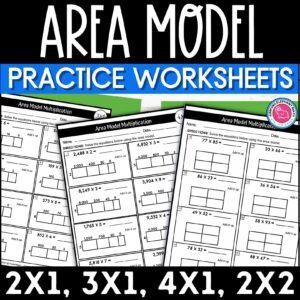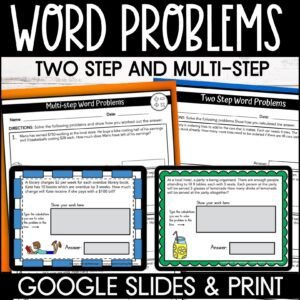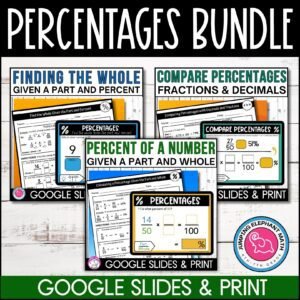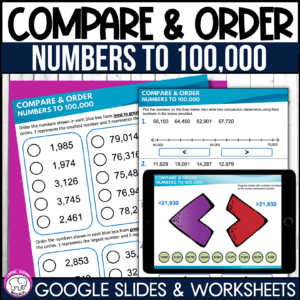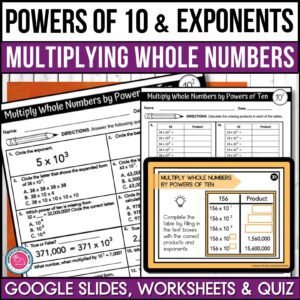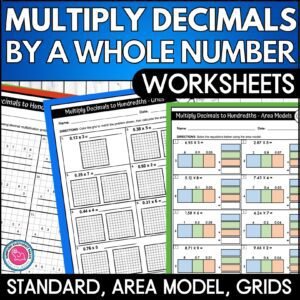Fractions, decimals, and percentages are foundational math concepts that students will use throughout their lives, from handling money to understanding data.
However students can struggle with switching between forms and recognizing that, for example three fourths, 75% and 0.75 have the same value and are parts of a whole.
By using engaging activities—like visual models, interactive games, and real-world applications—teachers help students develop a concrete understanding of these abstract ideas. When students see and experience how fractions, decimals, and percentages work in different contexts, they build stronger connections and confidence in their math skills
Below, I’m sharing some of my favorite tried-and-tested activities that make fractions, decimals, and percentages more exciting for 6th graders. If you have any go-to activities, I’d love to hear them—let’s keep the creativity flowing in our math classrooms!
Engaging Hands-On Activities for FDP Conversions
1. Candy Color Sorting
- Materials: Small bags of Skittles, Jelly Beans or M&Ms, graph paper
- Activity:
- Each student gets a bag of candy and sorts the colors into groups.
- Count and write the number of each color as a fraction of the total and record this on a Fractions, decimals and percents conversion table.
- Convert the fraction to a decimal and percentage.
- Create a bar graph or pie chart to visually represent the results.
- Have students compare their results with a partner’s to discuss variations.
2. If the World Were 100 People by Jackie McCann (Book)
- Materials: The book If the World Were 100 People by Jackie McCann (available on amazon). The author represents the whole planet as a village of 100 people and explores questions such as: Are there more males or females? How many have black hair or blue eyes? What languages do they speak? Who can read and write? How many have access to the internet as a part per 100. I’ve also used If the World Were 100 Animals by Miranda Smith. This is a great way to help students see the importance of percentages beyond math class.
- Activity: Read the book and discuss global statistics in fraction, decimal, and percentage form. Students can record answers in a conversion table or create posters or diagrams of their favorite facts from the books.
3. Fraction Kites
- Materials: Black & white printed 100 charts (I usually print on card if I want to create a display with these), colored pencils, scissors, color paper or plain card for kite bows.
- Activity: Students color a 100-chart, assign a fraction to each color they use, and convert it to decimals and percentages. They cut out the kite, write FDP values on the bows, and display them in class. Alternatively, you can give conversion tables out that assign either a fraction, decimal, or percent to a color and students use these to design their own pattern.
4. Rock, Paper, Scissors Game
- Materials: None!
- Activity: Students form groups of 3, and will rotate so that a pair of students play and one records the number of wins for each person in the pair. I usually have a set time (for example 3 mins on the clock) for each round. Once all 3 rounds are played, students calculate their wins as a fraction, decimal and percent, then compare their scores. (wins/total games). This is a firm favorite in my class but be prepared for noise!
5. Lego Fraction Towers
- Materials: Legos or connecting cubes in different colors
- Activity:
- Give each student a set of Legos with different colors.
- Have them build a tower or a design of their choosing using a set number of bricks (e.g., 10 or 20). All bricks need to be used and students select the colors, however I always give a minimum number of colors otherwise you will see quite a few towers made from 1 or 2 colors!
- Count how many of each color they used and express it as a fraction of the total.
- Convert the fraction into a decimal and percentage.
- Compare towers with classmates and discuss the differences.
For even more targeted practice, check out my Converting Fractions, Decimals, and Percentages Worksheets. This resource provides over 450 drill-style questions designed to build fluency, reinforce methods, and support test prep. With differentiated levels, you can easily scaffold learning to meet your students’ needs. Click here or on the resource images below to visit my store.
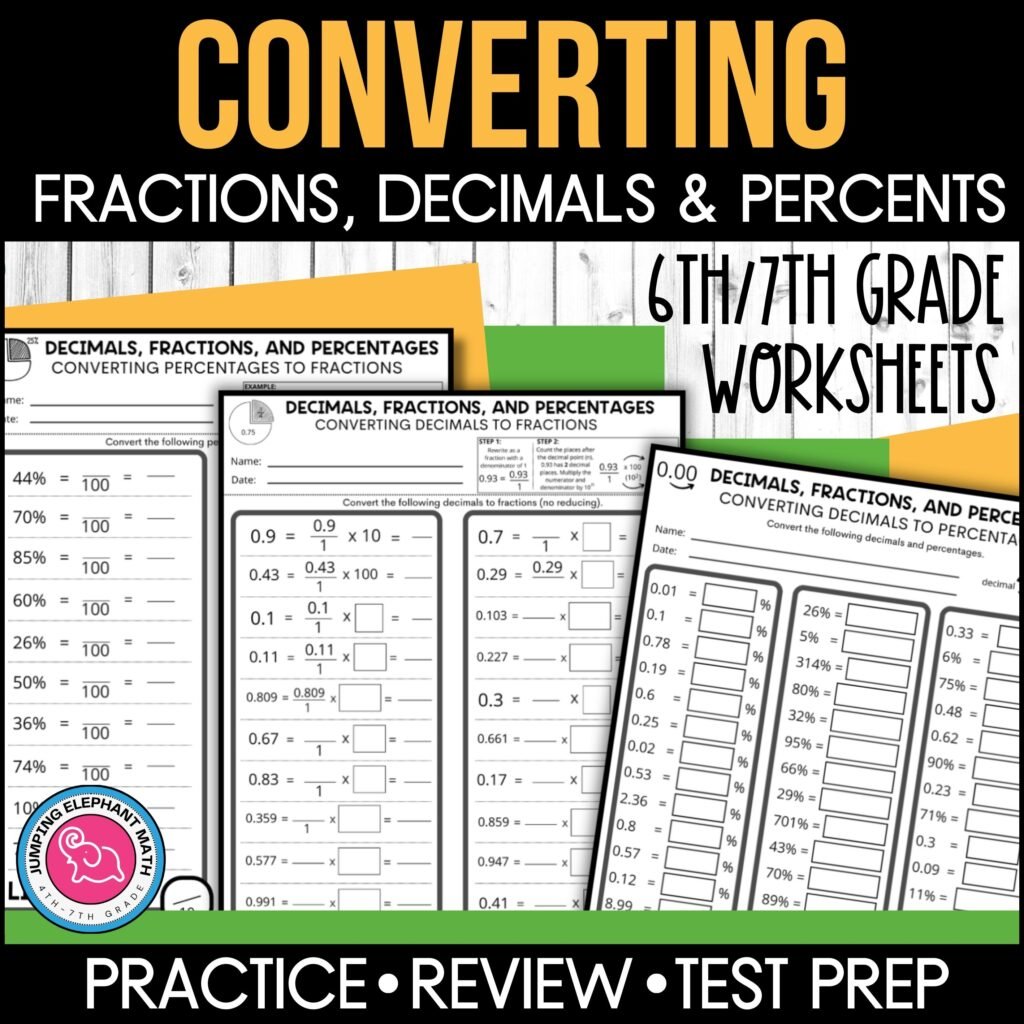


6. Pizza or Cookie Lab
- Materials: Pizza or cookie templates on card or paper or paper plates, color pencils, stickers or cutouts for toppings, glue sticks.
- Activity:
- Give each student a blank “pizza or cookie” (paper plate) and a set of topping stickers or cutouts.
- Assign each topping a fraction (e.g., “½ of the pizza has pepperoni, ¼ of the cookie has chocolate chips”). Alternatively for more challenge, you can use a mix of fractions, decimals and percents (25% of the pizza has pepperoni, 0.1 of the pizza has mushrooms)
- Have students color and decorate their pizzas according to given instructions.
- Convert the toppings’ fractions into decimals and percentages.
7. Basketball Free Throw Challenge
- Materials: Small basketball hoop (or a trash can), soft balls or scrunched up paper
- Activity:
- In teams of 5, students takes 10 shots at the hoop and records how many they made. You can also do this in pairs or any other factor of 100 possible within your class. If you have a group that is fewer than 5 )or other factor), students can have multiple turns, include the teacher/aide or act as referees!
- Express the successful shots as a fraction (sum of scores/total possible) (e.g., 23/50).
- Convert the fraction into a decimal (0.6) and percentage (60%).
- Compare results as a class and rank the highest shooting percentages.
- If there are teams with the same score, complete more rounds to eliminate until you have
8. Days of School Percent Tracker
Each day as part of your morning routine, record how many school days have passed out of the total school year or semester and how many are left. Convert this to a fraction, decimal, and percentage.
Resources to support your teaching of long division
Jumping Elephant Math long division resources are designed to meet the needs of a variety of learners and align with curriculum standards. Check out these bestselling percentages resources in my store. If you would like some further teaching tips for finding the percent of number, check out this blog post!





